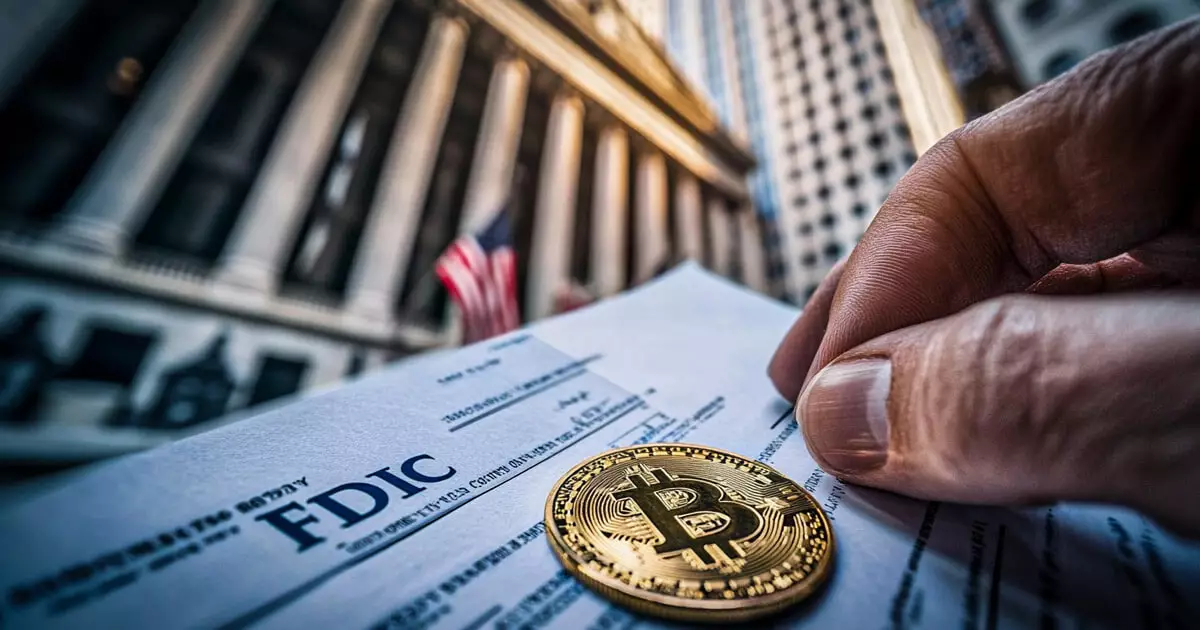The landscape of financial regulation is undergoing an unprecedented transformation as traditional banking institutions grapple with the rise of cryptocurrencies. On February 5, 2023, the Federal Deposit Insurance Corporation (FDIC) indicated a potential shift in its regulatory framework regarding banks’ involvement in crypto-related activities.
Recent reports suggest that the FDIC is considering new guidelines that would grant banks greater leeway to engage with digital assets, particularly in crypto custody services and innovative solutions like tokenized deposits. This proposed alteration in policy signifies a momentous pivot from previous regulatory stances that largely imposed stringent restrictions on the inclusion of cryptocurrency in banking services.
Historically, the FDIC has played a critical role in ensuring the stability and security of the banking system, acting as a watchdog over various financial practices. However, the agency’s upcoming revisions suggest an acknowledgment of the necessity to integrate blockchain technology and tokenization within conventional banking practices.
By allowing banks to pursue certain crypto-related initiatives without needing prior approval, the FDIC is signaling a progressive recognition of how banking infrastructures must adapt amid rapid technological advancements. This could potentially enable banks to create hybrid financial products that merge customer checking accounts with blockchain systems, thus presenting a viable alternative to the ubiquitous use of stablecoins.
Furthermore, the FDIC’s release of 175 documents regarding its 2022 oversight activities has prompted significant discourse in the industry. This move indicates a desire for increased transparency concerning its regulatory frameworks and decision-making processes. Acting Chairman Travis Hill emphasized a commitment to transparency and responsiveness to Freedom of Information Act (FOIA) inquiries, amidst issues raised by Coinbase regarding an alleged 15% deposit cap for banks associated with crypto transactions.
Despite this prospective leniency, the trajectory of FDIC interactions with banks reveals a much more complicated relationship. In a statement, Hill highlighted that banks expressing interest in crypto-related services often faced substantial pushback, experiencing prolonged queries and a general lack of guidance from the FDIC. This aspect raises questions about how much banks are willing to risk in engaging with new financial technologies when they receive mixed signals from regulators.
The internal documents disclosed by the FDIC provide evidence of a form of ‘regulation by exhaustion’, where the regulator’s persistent inquiries may have led banks to retract or abandon their crypto initiatives out of sheer weariness. This dynamic undermines the notion of fostering innovation, as it conveys an environment where banks may feel compelled to sidestep exploring new avenues for fear of regulatory backlash.
The Underlying Risks: Stability versus Innovation
As the FDIC prepares to adjust its regulatory stance, it remains paramount to assess the underlying concerns that have historically been associated with cryptocurrency engagements. The agency has previously identified volatility, reputational risks, and consumer protection as significant factors curtailing banks’ engagement with digital currencies. These criticisms highlight the friction between the desire for innovation and the imperative of financial stability, representing a fundamental challenge in achieving equilibrium within a rapidly evolving marketplace.
Caitlin Long, CEO of Custodia Bank, underscored the divergent viewpoints within the FDIC about this emerging sector. Citing instances from internal chats, she indicated a persistent reluctance within some sectors of the FDIC to embrace crypto deposits, which reflects a lingering hesitance to fully endorse cryptocurrencies. The cautious language used by regulators might indicate deep-seated fears over the stability and transparency of digital assets, which could curtail the very advancements that banks are eager to pursue.
The FDIC’s prospective shift regarding crypto regulations embodies the complexities of navigating the intersection of traditional banking and innovative financial technologies. As banks advocate for more favorable conditions to explore the potential of digital assets, the agency stands at a crossroads — balancing the need for innovation against the inherent risks posed by cryptocurrencies.
This dynamic will undoubtedly shape the future of banking as financial institutions seek to remain relevant in a digitally transforming landscape. Whether the FDIC can successfully transition to a framework supporting growth and innovation while maintaining the principles of stability and consumer protection remains to be seen. The upcoming months could reveal how regulators and banks will collaborate to redefine the financial landscape in the age of cryptocurrencies.
















Leave a Reply